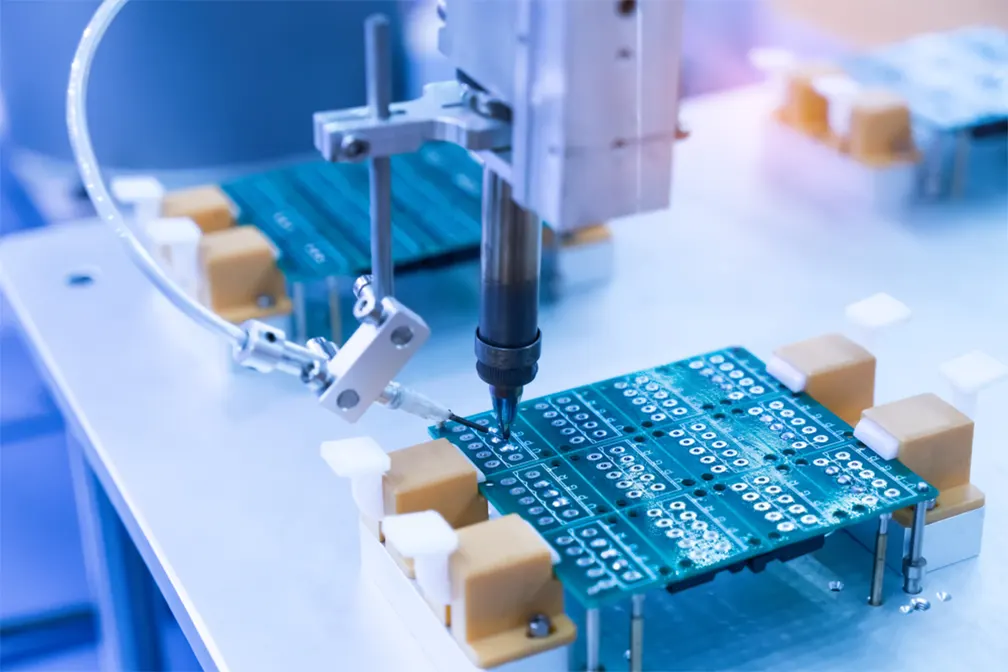- English
- Español
- Português
- русский
- Français
- 日本語
- Deutsch
- tiếng Việt
- Italiano
- Nederlands
- ภาษาไทย
- Polski
- 한국어
- Svenska
- magyar
- Malay
- বাংলা ভাষার
- Dansk
- Suomi
- हिन्दी
- Pilipino
- Türkçe
- Gaeilge
- العربية
- Indonesia
- Norsk
- تمل
- český
- ελληνικά
- український
- Javanese
- فارسی
- தமிழ்
- తెలుగు
- नेपाली
- Burmese
- български
- ລາວ
- Latine
- Қазақша
- Euskal
- Azərbaycan
- Slovenský jazyk
- Македонски
- Lietuvos
- Eesti Keel
- Română
- Slovenski
- मराठी
- Srpski језик
Rigid-Flexible PCB
As the professional manufacture, Hitech would like to provide you Rigid-Flexible PCB. A rigid-flexible PCB is a printed circuit board that combines both rigid and flexible materials in a single board. Rigid-flex PCBs are designed to provide the benefits of both rigid and flexible PCBs, allowing for greater design flexibility and functionality.
Send Inquiry
You can rest assured to buy Rigid-Flexible PCB from Hitech factory and we will offer you the best after-sale service and timely delivery. A rigid-flexible PCB is a printed circuit board that combines both rigid and flexible materials in a single board. Rigid-flex PCBs are designed to provide the benefits of both rigid and flexible PCBs, allowing for greater design flexibility and functionality.
The rigid sections of the board are made of rigid materials, such as FR-4 or other high-performance materials, while the flexible sections of the board are made of flexible materials, such as polyimide or other flexible materials. The rigid and flexible sections of the board are joined together using specialized adhesives and bonding techniques to create a single, integrated board.

Rigid-flex PCBs are commonly used in applications where space is limited, or where the board needs to be able to bend or flex to accommodate the requirements of the application. Some common applications for rigid-flex PCBs include medical devices, aerospace and defense systems, and consumer electronics.
The manufacturing process for rigid-flex PCBs typically involves the following steps:
Design: The first step in manufacturing a rigid-flex PCB is to design the board based on the requirements of the application. The board must be designed to accommodate both rigid and flexible materials, and the layout must be optimized for the specific application.
Material selection: Once the board design is complete, the next step is to select the appropriate materials for the rigid and flexible sections of the board. This typically involves selecting materials that are compatible with each other and that can withstand the environmental conditions of the application.
Layer stacking: The next step is to stack the layers of the board together to create the final board structure. This typically involves using specialized adhesives and bonding techniques to join the rigid and flexible sections of the board together.
Etching and drilling: Once the layers are stacked, the board is etched and drilled to create the necessary electrical connections and features.
Plating and finishing: The final step in the process is to plate and finish the board to create the necessary surface finish and to protect the board from environmental factors.

Overall, rigid-flex PCBs are a versatile and flexible solution for many applications, allowing for greater design freedom and functionality. By leveraging the latest materials and manufacturing techniques, manufacturers can produce high-quality rigid-flex PCBs that meet the requirements of a wide range of industries and applications.














